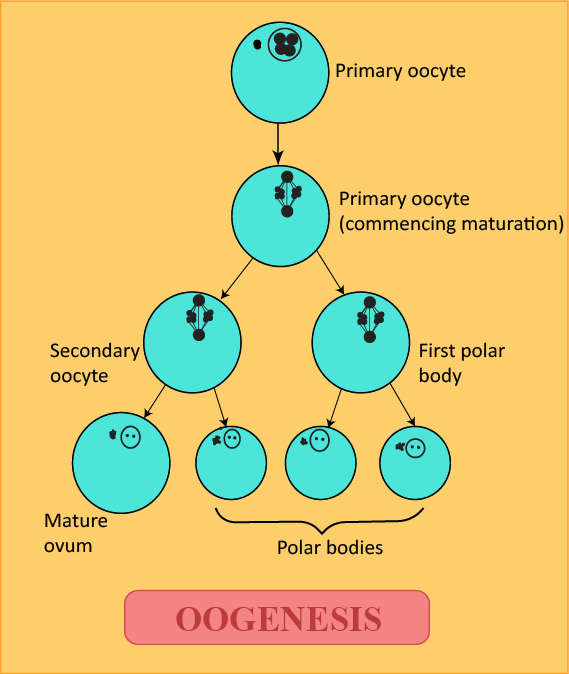
Give a basic difference between spermatogenesis and oogenesis.
Answer
459.6k+ views
Hint: It is the process of formation of sperm and it occurs in the seminiferous tubule of sperm. It includes the formation of spermatids and the formation of spermatozoa. And it is the process of formation of the mature female gamete, it occurs in the ovaries.
Complete answer:
Additional Information: The process of spermatogenesis is regulated by different glands and their products. The luteinizing hormone (LH) by the pituitary gland regulates the formation of sperm and therefore the production of testosterone within the male reproductive system.
The ovum which is produced is non-motile and remains in the fallopian tube to be fertilized by the sperm. It is an oval structure that contains yolk or plasma that provides nutrients to the cell.
Note: The method of spermatogenesis is the basis for sexual reproduction which allows genetic recombination, leading to genetic variation among the species.
In animals, oogenesis is a biologically vital process that ensures sexual reproduction. In the newborn baby, it is responsible for the transfer of half of the chromosomes to be introduced.


Complete answer:
| Spermatogenesis | Oogenesis |
| Spermatogenesis is the process of formation of mature sperm s through a series of mitotic and meiotic divisions alongside metamorphic changes within the immature sperm cell. | Oogenesis is the process of formation of a female gamete or ovum through a series of mitotic and meiotic divisions occurring in the female reproductive system. |
| It is the male type of gametogenesis which brings about the formation of mature male gametes. | It is the female type of gametogenesis which brings about the formation of mature male gametes. |
| The process of spermatogenesis is completed through the following three-phase; spermatocytogenesis, spermatogenesis, and spermiogenesis. | The process of oogenesis is divided into three-phase; the follicular phase, the ovulation phase, and the luteal phase. |
| The overall process of spermatogenesis occurs within the testes until the sperm moves to the epididymis and gains motility. | The overall process of oogenesis occurs within the ovary until the mature ovum moves to the fallopian tube. |
| Spermatogenesis forms millions of sperms every day. | Oogenesis releases one ovum per month. |
| The primary spermatocyte is the starting cell during spermatogenesis. | The primary oocyte is the starting cell during oogenesis. |
Additional Information: The process of spermatogenesis is regulated by different glands and their products. The luteinizing hormone (LH) by the pituitary gland regulates the formation of sperm and therefore the production of testosterone within the male reproductive system.
The ovum which is produced is non-motile and remains in the fallopian tube to be fertilized by the sperm. It is an oval structure that contains yolk or plasma that provides nutrients to the cell.
Note: The method of spermatogenesis is the basis for sexual reproduction which allows genetic recombination, leading to genetic variation among the species.
In animals, oogenesis is a biologically vital process that ensures sexual reproduction. In the newborn baby, it is responsible for the transfer of half of the chromosomes to be introduced.


Recently Updated Pages
Using the following information to help you answer class 12 chemistry CBSE

Full Form of IASDMIPSIFSIRSPOLICE class 7 social science CBSE

In case of conflict between fundamental rights of citizens class 7 social science CBSE

Can anyone list 10 advantages and disadvantages of friction

What are the Components of Financial System?

Complete the letter given below written to your Principal class null english null

Trending doubts
Which are the Top 10 Largest Countries of the World?

Differentiate between homogeneous and heterogeneous class 12 chemistry CBSE

Draw a labelled sketch of the human eye class 12 physics CBSE

What is a transformer Explain the principle construction class 12 physics CBSE

What are the major means of transport Explain each class 12 social science CBSE

How much time does it take to bleed after eating p class 12 biology CBSE




